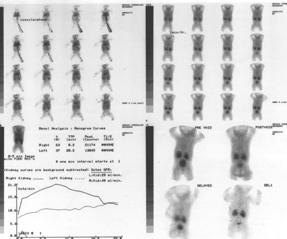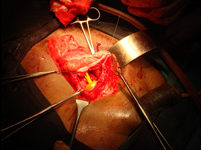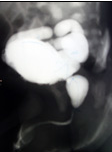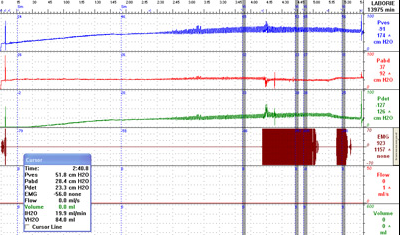We are managing the entire range of Pediatric Urology diseases including reconstructive pediatric urology, congenital malformations and pediatric neurogenic bladder. We have a large number of children with neurogenic bladder under our care (arguably one of the largest numbers in the country!) and have vast experience with urodynamics in children. We are regularly performing augmentation cystoplasty surgery and have initial experience with botulinum toxin injection into the bladder in children with neurogenic bladder. We are performing pediatric laparoscopies and have experience with laparoscopic pyeloplasty and nephrectomy in older children.
Hydronephrosis/PUJ Obstruction

Hydronephrosis (swelling of the kidney) and PUJ Obstruction (pelviureteric junction obstruction) are common problems in children. About 20% of fetus will show swelling in one kidney in an antenatal scan of the mother. However, many of these will resolve with time. In all children who had fetal hydronephrosis, an ultrasonogram is indicated after birth. Depending on the findings, this may be followed up in some children by a nuclear scan at about 6weeks. Some children will also need to undergo an Xray called the micturating cystourethrogram. Children with drop in kidney function or worsening hydronephrosis may require surgical correction called a pyeloplasty. This can now be accomplished laparoscopically esp in older children. Following surgery, hydronephrosis shows a slow regression and the kidney function usually either stabilizes or improves in about 95% of children.
Posterior urethral valves



Stress Urinary Incontinence
Vesicoureteral reflux is a relatively common problem affecting children. It is characterized by a reverse flow (reflux) of urine back toward the kidney at the time of passing urine. Ordinarily this is prevented by a natural valve mechanism at the junction of the ureter and bladder. VUR can predispose to urinary infections and is associated in some children with bladder function abnormalities (which might perpetuate the reflux). Some children can develop long term kidney function problems (reflux nephropathy). A large number of children will spontaneously outgrow their reflux and non-surgical treatment is appropriate for children without obvious kidney damage (scars), in whom the reflux is of lower severity (upto grades III). However in children who fail to outgrow the reflux, or if there are recurrent infections or if the kidney shows damage, then a ureteric reimplantation is recommended.
Neurogenic bladder

Bladder dysfunction in children is an important cause of preventable kidney failure. Serious life threatening problems in patients with spinal problems do not usually come from the spine-they come from the bladder! Unrecognized or untreated neurogenic bladder can rapidly damage kidney function. Once there is irreparable function loss, the long term consequences are tragic. Most such children will develop advanced kidney failure around the time of puberty. This distressing problem is completely preventable! Management of neurogenic bladder management CANNOT wait for the child to grow up. It must be managed on priority before any kidney damage occurs. Urodynamics is an important component of assessment. Careful, systematic treatment is the key to good quality care.
Megaureter
Megaureter is not really a specific diagnosis. It indicates that the ureter is markedly swollen up. This can happen in children with obstruction at the junction of the ureter and bladder (obstructed megaureter), severe reflux (VUR) or rarely without either obstruction or reflux. Treatment is based on the cause and may entail a ureteric reimplantation. This may be accomplished by open surgery or, in older children, by laparoscopy.
 Dr.K.V.R. PRASAD
Dr.K.V.R. PRASAD